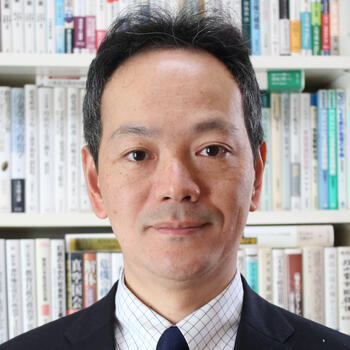The Future of Social Tech: Nurturing Skills and Markets for Social Impact Innovation

The inaugural conference in a special event series on the occasion of Shorenstein APARC's 40th Anniversary, "Asia in 2030, APARC@40"
With a keynote panel featuring YOSHIKI, a composer, classically-trained pianist, rock drummer, and the leader of the rock groups X Japan and The Last Rockstars
Hosted by APARC's Japan Program
Watch the livestream (English version) here.
Watch the livestream with Japanese interpretation here.
Join the Japan Program and the Shorenstein Asia-Pacific Research Center (APARC) of Stanford University for an in-person conference on February 23, 2023 as we gather Japanese and American entrepreneurs, investors, content creators, and educators to share lessons and best practices to accelerate innovation for social impact, or “social tech.” Attendees will have the opportunity to tap into environments optimal for developing skills and markets for social tech through the lens of movers and shakers in the fields of technology, music, business, research, and education.
From climate change action to pandemic response and preparedness, and from sustainable industrialization to lifelong well-being and the workforce of the future, the world is hungry for strategies and solutions that benefit people and the planet while supporting economic growth and prosperity. This kind of innovation for social impact requires societies to promote purpose- and potential-driven approaches to human capital development grounded in agility, creativity, and risk-taking.
Focusing on these issues, the conference seeks to catalyze and cultivate partnerships in social tech between Japan and the United States – two of the most important sources of globally successful technological advancements and contents development in the past half-century. Panel discussions, fireside chats, and Q&A sessions will spotlight practices for igniting enterprising minds and lessons to inspire current and future innovators in both countries and beyond.
Media Advisory and Press Contact
Journalists interested in covering the conference should contact Shorenstein APARC’s Communications Manager Michael Breger at mbreger@stanford.edu by February 21 at 9:00 a.m. PT to register. At the venue, they will be required to present a press credential from an established news organization. Freelance reporters should email a letter from the news organization for which they work to Michael Breger by the February 21 deadline. The press area is limited and press seating is not guaranteed.
Administrative Contact
For all other inquiries about the conference contact Japan Program Coordinator Kana Igarashi Limpanukorn at kilimpan@stanford.edu.
9:30-9:45 a.m.
Opening Remarks
Kiyoteru Tsutsui
Senior Fellow, Freeman Spogli Institute for International Studies
Henri H. and Tomoye Takahashi Professor in Japanese Studies
Director, Japan Program, Shorenstein Asia-Pacific Research Center
Deputy Director, Shorenstein Asia-Pacific Research Center
Co-Director, Center for Human Rights and International Justice
Professor of Sociology
Stanford University
Welcome Remarks
Gi-Wook Shin
Senior Fellow at the Freeman Spogli Institute for International Studies
Professor of Sociology
William J. Perry Professor of Contemporary Korea
Director of the Shorenstein Asia-Pacific Research Center and the Korea Program
Stanford University
Yasushi Noguchi
Consul General of Japan in San Francisco
9:45-11:00 a.m.
Panel 1 – Investing in the Future of the Environment
Gretchen Daily
Co-Founder and Faculty Director, Natural Capital Project
Bing Professor of Environmental Science
Senior Fellow in the Stanford Woods Institute for the Environment
Director of the Center for Conservation Biology
Stanford University
Reiko Hayashi
Director and Deputy President BofA Securities Japan Co., Ltd.
Moderator: Yasumasa Yamamoto
Visiting Scholar at APARC, 2022-23
Visiting Professor, Kyoto University Graduate School of Management
11:15 a.m.-12:30 p.m.
Panel 2 – STEAM, EXPO, and the Future of Sciences and Arts Education
Rie Kijima
Assistant Professor and Director, Initiative for Education Policy and Innovation
Munk School of Global Affairs & Public Policy, University of Toronto
Co-founder, SKY Labo
Sachiko Nakajima
CEO, steAm, Inc.
Thematic Project Producer, Japan Association for the 2025 World Exposition
Moderator: Takako Hikotani
Professor at Gakushuin University International Centre
Senior Fellow at the Asia Society Policy Institute, Tokyo
12:30-1:30 p.m. ~ Lunch Break
1:30-2:45 p.m.
Panel 3 – The Future of Democracy and Digital Media
Larry Diamond
Mosbacher Senior Fellow in Global Democracy at the Freeman Spogli Institute for International Studies
William L. Clayton Senior Fellow at the Hoover Institution
Stanford University
Francis Fukuyama
Olivier Nomellini Senior Fellow, Freeman Spogli Institute for International Studies
Director, Ford Dorsey Master's in International Policy
Professor by Courtesy, Department of Political Science Stanford University
Ken Suzuki
Founder and CEO, SmartNews
Project Researcher, The University of Tokyo
Moderator: Kiyoteru Tsutsui
Senior Fellow, Freeman Spogli Institute for International Studies
Henri H. and Tomoye Takahashi Professor in Japanese Studies
Director, Japan Program, Shorenstein Asia-Pacific Research Center
Deputy Director, Shorenstein Asia-Pacific Research Center
Co-Director, Center for Human Rights and International Justice
Professor of Sociology
Stanford University
3:15-4:30 p.m.
Keynote Panel – The Future of Entertainment and Contents Business: Taking on Global Challenges
YOSHIKI
Composer, classically-trained pianist, rock drummer, and leader of the rock groups X Japan and The Last Rockstars
Moderator: Ichiro Fujisaki
Former Japanese Ambassador to the United States

Gretchen Daily is the co-founder and faculty director of the Stanford Natural Capital Project. Founded in 2005, the Natural Capital Project (NatCap) is a global partnership whose goal is to integrate the values of nature into planning, policy, finance, and management. NatCap works directly in communities, institutions, and countries all around the world. Its science and tools are accessible and actionable through its free, open-source InVEST data & software platform hosted at Stanford University, and now applied in 185 nations.
Daily is also the Bing Professor of Environmental Science in the Department of Biology at Stanford University, the Director of the Center for Conservation Biology at Stanford, and a senior fellow at the Stanford Woods Institute for the Environment.
Daily’s research is focused on understanding human dependence and impacts on nature and the deep societal transformations needed to secure people and nature. She was trained as an ecologist and holds international honors for her work.

Larry Diamond is the William L. Clayton Senior Fellow at the Hoover Institution, the Mosbacher Senior Fellow in Global Democracy at the Freeman Spogli Institute for International Studies (FSI), and a Bass University Fellow in Undergraduate Education at Stanford University. He is also professor by courtesy of Political Science and Sociology at Stanford. He leads the Hoover Institution’s programs on China’s Global Sharp Power and on Taiwan in the Indo-Pacific Region. His most recent book is Ill Winds: Saving Democracy from Russian Rage, Chinese Ambition, and American Complacency.
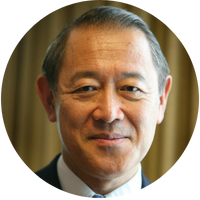
Ichiro Fujisaki has been Japan’s top diplomat for the economy and trade, as well as political, security and regional issues. He served as ambassador to the United States following his service as Japan’s ambassador to the United Nations and World Trade Organization in Geneva. Due to Japan’s constantly changing political leadership, Ichiro Fujisaki became the key interlocutor between Japan and the U.S. especially during the critical period following the earthquake, tsunami and nuclear accident in March 2011.
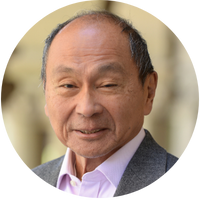
Francis Fukuyama is the Olivier Nomellini Senior Fellow at Stanford University's Freeman Spogli Institute for International Studies (FSI), and a faculty member of FSI's Center on Democracy, Development and the Rule of Law (CDDRL). He is also Director of Stanford's Ford Dorsey Master's in International Policy, and a professor (by courtesy) of Political Science. Dr. Fukuyama has written widely on issues in development and international politics. His latest book, Liberalism and Its Discontents, was published in May 2022.

Reiko Hayashi is director and deputy president of BofA Securities Japan Co., Ltd.
In these roles, she oversees the firm’s interactions with regulators and government departments in Japan and is responsible for overseeing the governance framework across the business.
Reiko is also responsible for driving Environmental, Social and Governance client initiatives for the business. As chair of the Japan Philanthropy Committee and co-chair of the LGBT Pride employee network in Japan.
Reiko has been with the firm since 2000 and has held a number of senior positions in investment banking, including head of Japan Global Capital Markets.
Reiko serves as a member of governmental working groups such as Expert Panel on Sustainable Finance (FSA) and GX Council (Cabinet Office). She is also a member of the Council for Promoting Sustainable Development Goals (SDGs) of the Japan Securities Dealers Associate (JSDA) as well as Board Member of International Capital Market Association (ICMA).
In 2015, Reiko was featured in FinanceAsia’s list of influential women in finance. She holds a bachelor’s degree in International Relations from The University of Tokyo and a master’s degree in Educational Sociology from The Graduate School of The University of Tokyo. In 2016, she became a non-executive auditor at National Graduate Institute for Policy Studies (GRIPS).

Takako Hikotani is a Professor at Gakushuin University International Centre. She is also a Senior Fellow with the Asia Society Policy Institute in Tokyo, and concurrently Visiting Professor at the School of Global Policy and Strategy, University of California at San Diego (Spring Semester 2022 and Winter Semester 2023).
From 2016 to 2021, she was the Gerald L. Curtis Associate Professor of Modern Japanese Politics and Foreign Policy at Columbia University. She has previously taught at the National Defense Academy of Japan, where she was an Associate Professor. Her research focuses on civil-military relations and Japanese domestic politics, Japanese foreign policy, and comparative civil-military relations.
Her recent publications (in English) include "How the Ukraine War is Changing Japan" (Foreign Affairs, April 28, 2022); "The Japanese Diet and Defense Policy-making" (International Affairs, 94:1, July, 2018); "Trump's Gift to Japan: Time for Tokyo to Invest in the Liberal Order" (Foreign Affairs, September/October 2017). She was a Visiting Professional Specialist at Princeton University as Social Science Research Council/Abe Fellow (2010-2011), as well as a Suntory Foundation Torii Fellow (2000-2001), and Fellow of the US-Japan Leadership Program, US-Japan Foundation (2000- ).
Professor Hikotani received her BA from Keio University, MAs from Keio University and Stanford University, and PhD in Political Science from Columbia University, where she was a President's Fellow.
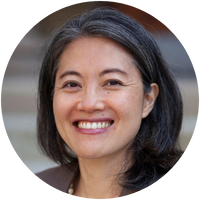
Rie Kijima is an Assistant Professor and Director of Initiative for Education Policy and Innovation at the Munk School of Global Affairs & Public Policy, University of Toronto. Rie Kijima’s research addresses topics such as international assessments, education reforms, gender and STEAM learning. Her recent publications have appeared in Sociology of Education, International Journal of STEM Education, and Thinking Skills and Creativity.
She was previously a Lecturer and Interim Director of the International Comparative Education / International Education Policy Analysis programs at the Stanford Graduate School of Education. She received her Ph.D. and M.A. from Stanford University, and her B.A. from International Christian University in Tokyo, Japan.
She has worked at aid agencies such as the World Bank and Japan International Cooperation Agency. At the World Bank, she was an education consultant specializing in monitoring and evaluation. She helped advance equity-focused education projects in Morocco, Tunisia, Vietnam, and Laos. In 2016, she co-founded an education non-profit organization, SKY Labo, to promote STEAM learning and design thinking to girls living in Japan.

Sachiko Nakajima is a musician, a mathematics researcher, and a STEAM Educator. She is also CEO of steAm, Inc.,the representative director of steAm BAND Association and a thematic project producer of Expo 2025, Osaka, Kansai, Japan. She also serves as a STEM Girls Ambassador, Cabinet Office, and project researcher of Graduate School of Mathematical Sciences The University of Tokyo. She won the gold medal as the first Japanese woman in the International Mathematical Olympiad. She passionately conducts research on art and technology as well as music, mathematics, and education.

Ken Suzuki is CEO and co-founder of SmartNews, the global leader redefining information and news discovery. Ken co-founded SmartNews Inc. in 2012 with the mission of “delivering the world’s quality information to the people who need it.” He is responsible for the vision and strategy of SmartNews, which entered the U.S. market in 2014. Ken graduated from the Department of Physics at Keio University in 1998. He received a Ph.D in Complex Systems and Artificial Life from the Graduate School of Arts and Sciences at The University of Tokyo in 2009. He has also authored several published works such as “Namerakana Shakai to Sono Teki" (The Smooth Society and Its Enemies).
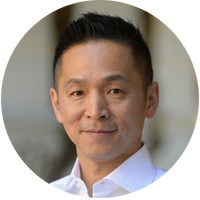
Kiyoteru Tsutsui is the Henri H. and Tomoye Takahashi Professor, Professor of Sociology, Senior Fellow at the Freeman Spogli Institute for International Studies, and Deputy Director of the Walter H. Shorenstein Asia-Pacific Research Center, where he is also Director of the Japan Program. Tsutsui’s research interests lie in political/comparative sociology, social movements, globalization, human rights, and Japanese society. His most recent publication, Human Rights and the State: The Power of Ideas and the Realities of International Politics (Iwanami Shinsho, 2022), was awarded with the 2022 Ishibashi Tanzan Award and the 44th Suntory Prize for Arts and Sciences.

Yasumasa Yamamoto is a Visiting Professor at Kyoto University graduate school of management and has been a specialist in emerging technology such as fintech, blockchain, and deep learning. He was previously an industry analyst at Google and a senior specialist in quantitative analysis of secularized products as well as derivatives at Bank of Tokyo Mitsubishi UFJ in New York. Yamamoto holds a M.S. from Harvard University and a master's degree from the University of Tokyo.

YOSHIKI is a composer, classically-trained pianist, rock drummer, and the leader of the rock groups X Japan and The Last Rockstars. YOSHIKI was named “one of the most influential musicians and composers in Japanese history” by Consequence of Sound and is described by Billboard Magazine as “a musical innovator”.
His worldwide projects include a song dedicated to the tenth anniversary of the Emperor of Japan’s reign, the official theme song for the Aichi World Expo, Hollywood film soundtracks, and the official theme song for the prestigious Golden Globe Awards. Led by YOSHIKI, X Japan has sold over 30 million albums and singles, and has sold out the 55,000-seat Tokyo Dome a record-breaking 18 times. He was the first Asian musician to perform at the world’s greatest music halls including Madison Square Garden, Wembley Arena, and a solo performance at Carnegie Hall.
In 2022, YOSHIKI's talent competition series YOSHIKI SUPERSTAR PROJECT X became the #1 ranked variety show on Hulu Japan. He recently announced a world tour in 2023 with the rock supergroup THE LAST ROCKSTARS.
In addition to his music activities, he is also a fashion icon as the designer of his high-fashion kimono brand YOSHIKIMONO and the first Japanese male to appear on the cover of Vogue Japan. He is also the founder of Yoshiki Foundation America, a 501(c)(3) non-profit public benefit organization, and has long been committed to philanthropy. In 2021, Baccarat selected YOSHIKI to design a Harcourt glass in celebration of its 180th anniversary. His Y by Yoshiki wine brand, including the newly-released Y by Yoshiki x Champagne Pommery, is continually sold-out across Japan.
In 2022, YOSHIKI formed a business partnership with Coca-Cola Japan to launch the energy drinks Real Gold X and Real Gold Y.
Paul Brest Hall
555 Salvatierra Walk, Stanford, CA, 94305
Registration for in-person attendance has reached capacity. The conference is also available via livestream and with Japanese interpretation.







